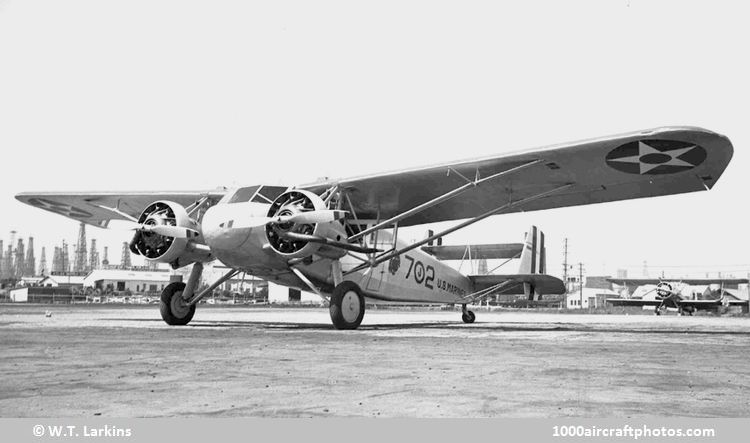07/31/2014. Remarks by Johan Visschedijk: "The Model 55 Kingbird was essentially an enlarged twin-engined version of the Model 56 Thrush that was under simultaneous development. Seating was for eight and there was increased baggage and fuel capacity. The unique design feature was the close placement of the propellers ahead of a short nose to minimize engine-out control problems.
The timing of the Kingbird was poor; it appeared in May 1929, but production models were not available until mid-1930, after the Depression was under way. Three prototypes were built at Garden City but production was at St. Louis.
Kingbird C. The first prototype, a seven-seater, was originally powered with two 185 hp Curtiss Challenger engines, but was so underpowered that it was quickly converted to the higher powered J-model without being certificated as a C-model. C/n G-1, registration 3133.
Kingbird D-1. The second and third prototypes were completed with 225 hp Wright J-6-7 Whirlwind engines and received TC 347 in August 1930. However, these were soon converted to D-2 models; there were no production D-1s. C/n G-2, G-3, registration 310N, 374N.
Kingbird D-2. Fourteen eight-seat production models built at St. Louis with 300 hp Wright J-6-9 Whirlwind engines. ATC 348 also issued in August 1930. All but the two converted from D-1s served Eastern Air Transport as airliners. C/n: 2001 to 2012, 2014, 2015, registration 585N, 586N, 588N, 589N, 599N, 600V to 602V, 620V to 622V, 626V, 628V, 629V.
Kingbird D-3. The last production Kingbird was the single six-seat D-3 model, powered with 330 hp Wright J-6-9s; ATC 440 was awarded in August 1931. Seating was reduced to five passengers and one pilot but space was provided for 259 lb (117 kg) of baggage or mail plus toilet facilities and increased fuel capacity. C/n 2016, registration 11816.
Kingbird J-1. The first prototype, c/n G-1, was converted to J-1 by change to 240 hp Wright J-6-7 engines. Memo Approval 2-122 was issued in September 1929; the aircraft crashed on July 23, 1930.
Kingbird J-2. The third prototype, c/n G-3, became the J-2 model (for J-6-7 engines) and served as the prototype for the D-1 model to which it was converted before becoming D-2.
Kingbird J-3. The second prototype, c/n G-2, became the J-3, a six-seat mailplane with 300 hp J-6-9s, and received Category 2 Approval 2-196 in March 1930.
JC-1/RC-1. The USN ordered one D-2 Kingbird, c/n 2013, for the Marines under the designation JC-1 (J for Utility). By the time the machine was delivered in March 1931 the designation had been changed to RC-1 in the R-for-Transport category. This use of the single C and R in combination did not duplicate the CR-1 racer of 1921 because the sequence of the letters was now reversed. Carrying BuNo. 8846, the single RC-1 first served VF-9M at Quantico, Virginia, then VJ-7M at San Diego, California, till 1936."
